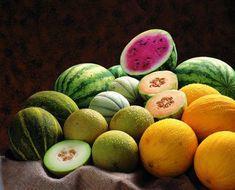
Melons are a mainstream line, but at this time of year there is fierce competition as a vivid array of summer fruit is poised to come onto the market.
European supplies from the likes of Spain, Italy, France, Hungary, Greece, Turkey and Portugal make up the main volumes for a category that has had to fight for a fair return in recent years.
The UK is a unique market for melons in that almost all types are consumed, with Honeydew in the top spot, ahead of Galia and Cantaloupe, as well as Piel de Sapo and watermelons.
Kantar Worldpanel figures for the year to 17 April show that the UK melon market is now worth £102 million, slipping by 1.2 per cent on last year. Volumes weigh in at 103m tonnes, having fallen by 5.7 per cent.
This is a market that could stand to benefit from the run of high temperatures, especially if it continues into the summer. This, combined with a balance of supermarket promotions at key times, could help reinvigorate the category.
Sainsbury’s buyer Finbar Cartlidge has planned the season carefully and as it gets underway, it is on the right track. He is tight lipped on the kinds of promotions that Sainsbury’s will line up for the category, but concedes that “customers are savvy and looking for a good deal” so this will be reflected in special offers.
“I don’t foresee any problems so far,” he says. “Almeria is starting a little bit late but it’s too early to assess the whole season. We pay close attention to the varieties we source to ensure that we have the best tasting fruit for customers.”
So how is the season shaping up? Are there any signs that demand is better this year? “It’s difficult to be sure with the late Easter and extra bank holiday, but sales do seem to have benefitted from the unseasonably warm weather,” says Cartlidge. “We’ve worked closely to plan the season with our suppliers and growers so we don’t expect any problems.”
The season has got off to a promising start, with demand accelerating from around mid-March at the first signs of the early spring. The continued good weather has helped boost sales for all melons.
The tail end of South American programmes has allowed for a smooth run into European sendings. Morocco started a little late but the Spanish region of Almeria is now stepping up and supplies from Murcia are on schedule. In fact, Spain is a key source of European melons, led by the region of Andalusia.
María José Pardo, managing director of trade body Hortyfruta, says: “The main challenge is to deliver a high quality melon to the European markets with a level of ripeness that delivers a high level of sweetness for consumers.”
But there are a number of hurdles facing European producers including high production costs linked to increases in fuel, plastic, labour and financing, as well as inconsistent weather both in the countries of production and consumption, all combined with the exchange rate making UK retail levels fairly high.
However, suppliers are trying to secure their position by raising standards in a bid to get better prices.
Vidafresh MD Terry Watts admits that consumers are becoming increasingly demanding and are “looking for better eating characteristics coupled with value for money”. He adds: “This is not about a low price, it’s about consumer satisfaction. If you bought a melon for, say, £1 and you threw half of it away as it didn’t taste nice and then bought another for, say, £1.25 and it was really good, which is better value for money?”
But it is still too soon to see how the season will pan out. “That purely depends on what kind of summer we have,” says Watts. “If this great weather continues, demand will continue to be high. The problem is that growers cannot plan for such a summer so we might see shortages for certain varieties. It also very much depends on demand from other European countries but whatever happens, let’s hope that there’s a fair balance between availability and price because some growers have had difficult seasons in the last few years and they need support.”



